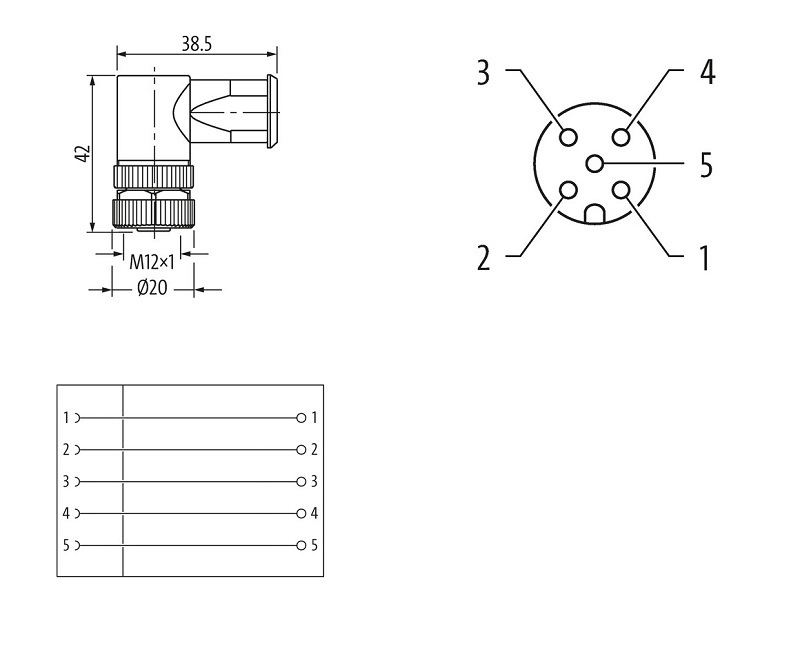Đầu nối Murrelektronik M12 female 90° A-cod 7000-13011-0000000: là đầu nối dùng để kết nối tín hiệu điều khiển, không cáp
– 5-pol., 0,14 – 1,5mm², 2,5 – 8mm
– M12 cái 90°, A-cod, 5 chân

– Vỏ nhựa có khả năng chống hóa chất và dầu tốt
Đầu nối Murrelektronik M12 female 90° A-cod 7000-13011-0000000
– 5-pol., 0,14 – 1,5mm², 2,5 – 8mm
– M12 cái 90°, A-cod, 5 chân
– inserted, screwed
– IP67
Đầu nối Murrelektronik M12 female 90° A-cod 7000-13011-0000000: là đầu nối dùng để kết nối tín hiệu điều khiển, không cáp
– 5-pol., 0,14 – 1,5mm², 2,5 – 8mm
– M12 cái 90°, A-cod, 5 chân

– Vỏ nhựa có khả năng chống hóa chất và dầu tốt
Thông số kỹ thuật – Đầu nối Murrelektronik M12 female 90° A-cod 7000-13011-0000000
| Tightening torque | 0,6 Nm |
|---|---|
| Mounting method | screwed, pluggable |
| Coating contact | gold plated |
| Family construction form | M12 |
| Thread | M12 x 1 |
| Gender | female |
| Cable outlet | angled |
| Coding | A |
| Material contact | CuZn |
| Material | PA6 GF30 |
| No. of poles | 5 |
| Width across flats | SW18 |
| Degree of protection (EN IEC 60529) | IP67 |
| Mounting method | field-wireable |
|---|
| Operating voltage AC max. | 60 V |
|---|---|
| Operating voltage DC max. | 60 V |
| Operating current per contact max. (40°C) | 7,5 A |
| Status indication LED | no |
|---|
| Rotation option | 90° (4 outlet directions) |
|---|---|
| Cross section connection with wire end ferrule min. | 0,14 mm² |
| Cross section connection with wire end ferrule max. | 1,5 mm² |
| Cross section connection with wire end ferrule AWG min. | 26 AWG |
| Cross section connection with wire end ferrule AWG max. | 16 AWG |
| Tightening torque | 0,6 Nm |
|---|---|
| Mating cycles min. | 100 |
| Additional condition protection degree | inserted, screwed |
|---|---|
| Pollution Degree | 3/2 |
| Insulation resistance min. | 100 MΩ |
| Material gasket | FPM, NBR |
|---|
| Mounting method | Schraubgewinde |
|---|---|
| Clamping range min. | 2,5 mm |
| Clamping range max. | 8 mm |
| Operating temperature min. | -30 °C |
|---|---|
| Operating temperature max. | 85 °C |
| Note on strain relief | Protect the connectors by suitable measures from mechanical loads, e.g. by the usage of cable ties. |
|---|---|
| Note on bending radius | Attention: Observe the permissible bending radii when laying cables, as the IP protection class can be endangered by excessive bending forces. |